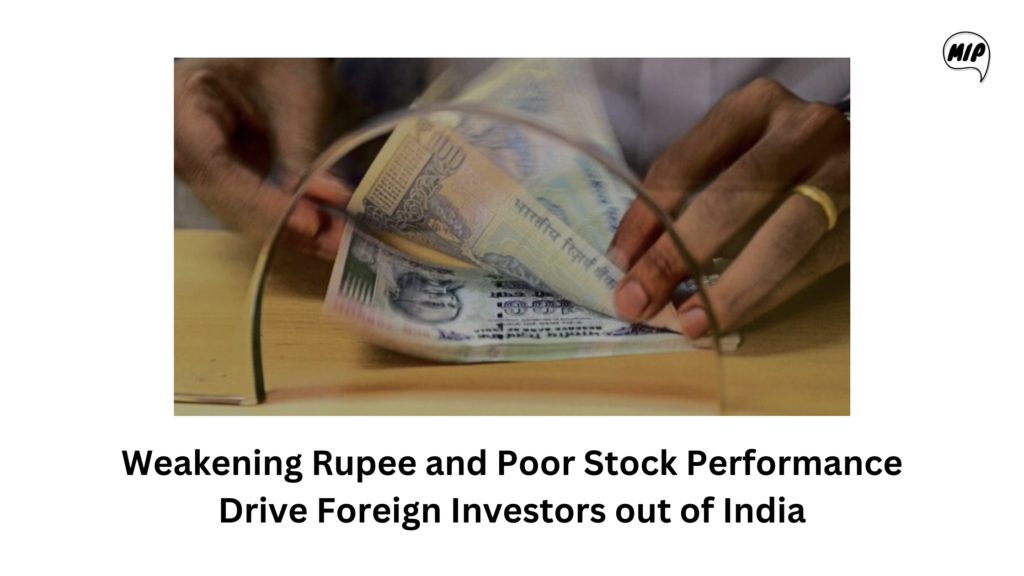
The steady weakening of the Indian rupee that has eroded dollar returns is a key trigger for foreign portfolio investors (FPIs) selling in India’s cash market in the past two years, market experts and economists said.
A stronger dollar and costlier oil could make it worse, and some reprieve is likely only next financial year when India’s inclusion in the JP Morgan Global Bond Index attracts $20 billion-$30 billion to government bonds.
While the Sensex gave around 4.4% returns in 2022 and 5.32% so far this year, the Dollex 30—which captures the dollar-adjusted returns of the Sensex—turned in a negative 6% return last year and a relatively lower 4.68% so far this year. This means FPI returns underperform those of local investors when the rupee weakens and outperform them when it strengthens.
According to market veteran Shankar Sharma, founder of GQuant Investech, the sharp depreciation of the rupee over the past two years is one of the “main reasons” for foreign money outflows, the other being the poor performance by index heavyweights such as Reliance Industries, HDFC Bank, Infosys, and Tata Consultancy Services in the past one year.
“Dollex returns clearly show that the weaker rupee has played spoilsport,” Sharma said. “While India is in a relatively sweet spot than other emerging markets, the fact also is that many large-caps have hardly moved over the past two years, and while the mid-caps and small-caps have outperformed this year, their volatile nature leaves little room for FPIs to maneuver in.”
The rupee can continue to remain under pressure if the Fed hikes the FFR (Fed Funds Rate) to rein in inflation in December or if crude tests the $100/bbl mark on worsening hostilities in West Asia,” he added.
The worst dollar-adjusted returns are generated in years of steep rupee fall. For instance, the 11% depreciation in the local unit to 82.72 a dollar in 2022 from 74.47 in the past year caused the Dollex to fall 6.32% to 6,037 even as the Sensex rose 4.4% to 60,841.
This year, though, the rupee has fallen less—0.39% to 83.04 through 2 November—resulting in less underperformance by Dollex compared with Sensex.
Rohit Srivastava, founder of IndiaCharts and Strike Money Analytics, agrees that weaker dollar returns have been the key reason for FPIs selling in the cash market since 2021. This doesn’t include their investments in the primary market.
Data from Strike Money shows that FPIs sold shares on NSE’s secondary market for almost three years to date on the trot. This includes ₹91,951 crore in 2021, ₹2.78 trillion in 2022, and ₹52,346 crore so far this year.
Economists said predicting the course of the rupee remains a challenge, given the likely impact of the West Asia war on crude and persistently high US bond yields on EM currencies.
Crisil chief economist D.K. Joshi said that though the rating company has maintained its outlook of ₹83 a dollar by March, some near-term volatility could result in it dipping to as low as ₹84, given the geopolitical tensions and high US bond yields, which prompt FPIs to sell EM assets and buy the dollar.
He said though the rupee could dip below 83 over the next few months, it could close the current fiscal at that level on the anticipated inflows due to India’s inclusion into the JP Morgan Bond Index. He expects inflows of around $30 billion into India’s debt market over 10 months in FY25.
There is likely to be some pre-positioning by March before the inflows due to the bond inclusion actually commence from around June over the next 10 months,” said Joshi. “That is why I am retaining my target at 83 to the dollar by March.”
The large-cap showing relative to the mid-and small-caps has also been impacted because of the poor show of the large-caps.